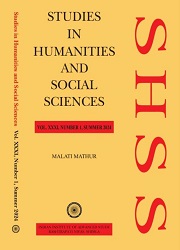Jotirao Phule’s Alternative to Brahman Dharma
A Look into His Spiritual Conception of Satyadharma
Keywords:
Jotirao Phule, Indian Reformation, Hindu social reform, HinduismAbstract
This paper is an humble attempt to explain the spiritual conception of ‘Satyadharma’ propounded by Jotirao Govindrao Phule (1827- 1890), the foremost social reformer as well as social thinker of modern India. A radical reformer of the nineteenth century Maharashtra, Phule came out with a fresh framework of Hindu social reform wherein he, in addition to other things, proposed his idea of Satyadharma as an alternative model to Brahman Dharma. The paper argues that though Phule was not satisfied with the existing state of affairs in Hinduism, he neither himself thought of conversion nor suggested his followers to embrace other religions. To him, just “Arya Bhats” (orthodox Brahmans) alone did not constitute the Hindus, but “Shudras, Atishudras, Bhils etc.” all are Hindus; though, those Hindus were unfortunately “put to great deprivations and hardships” by “Brahmanism”. Clearly, he was different from his other contemporary reformers who strived for reforms in Hinduism without questioning Brahmanism. But Phule, in his framework of Hindu social reform, earnestly expressed the need to step out the ideology of ‘Brahmanism’ from Hinduism. Accordingly, he came forward with his idea of ‘Satyadharma’ which was his alternative model to Brahman Dharma.The paper suggests that Phule’s idea of ‘Satyadharma’ was the outcome of his ground-laying and ‘organic’ approach which was based on a ‘perspective from below’ or that of lower classes of Hindu society. His alternative religion transcends all artificial divisions/distinctions prevalent among the people based on caste, class, gender, community, status, position, privilege, physical condition, faith, opinion, food habits or the mode of apparel, etc. The major thrust of Phule in his idea of Satyadharma was mainly upon the universal values of morality, equality, fraternity and rationality and these values could be identified as the precepts of his religion of truth.


